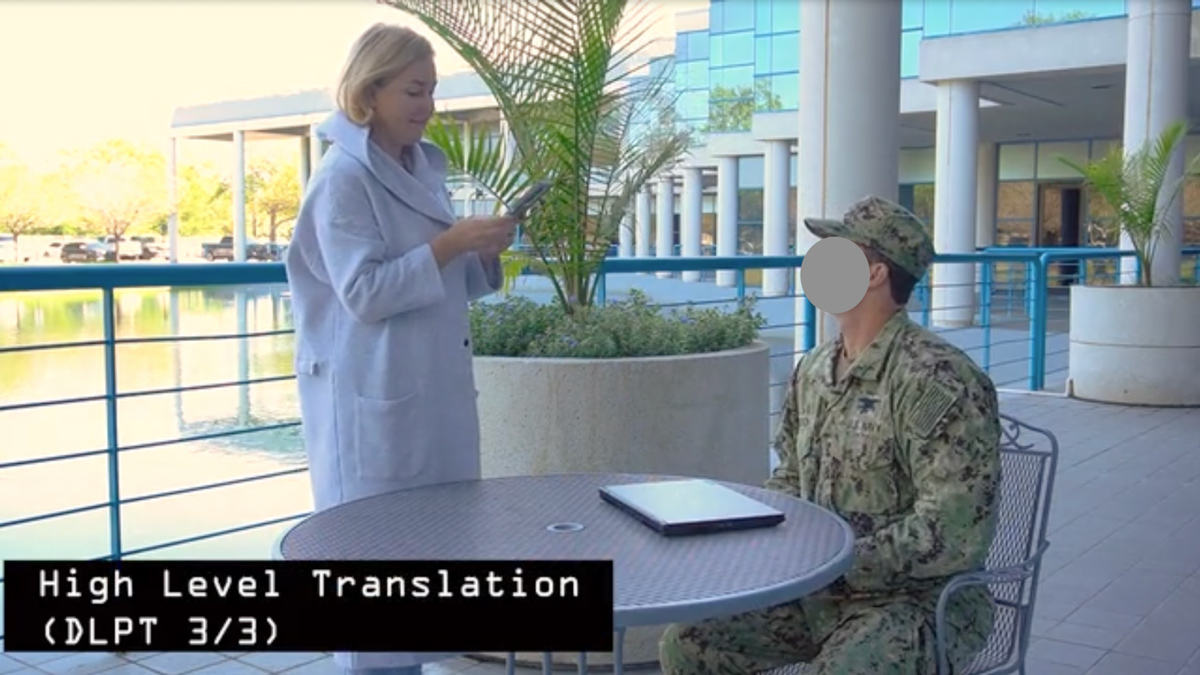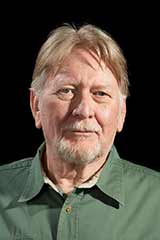TERP in an App

A SEAL speaks to a woman using the translation device. (USSOCOM)
By Jim Morris
One of the main things that makes Special Forces special is language capability. The ideal is for every SF soldier to be capable in one language and able to limp along in a couple of others. This ability has contributed greatly to making SF the magnificent defense policy tool that it is.
But not every SF troop has this capability. It takes a while to develop, and it is not uncommon for a Green Beret to be deployed before he acquires it. Or to be sent where they speak another language, or to know the dominant language in an area, but be training minorities or tribal people who speak another language entirely.
So, more often than not, Special Forces teams are dependent on interpreters, some good, some not so good. Good or not they all have an agenda, which may or may not correspond with the team’s. Sometimes their agenda corresponds with that of the enemy.
Fear not: USSOCOM is developing a “Terp in an app” for the operator’s beefed up cell phone. It’s not a Star Trek universal translator, but it can do things that device cannot. According to Jim Smith, acquisitions executive for USSOCOM’s Joint Acquisition Task Force the device can not only do Voice to Voice (VTV) translation but Visual Environment Translation (VET). The device is being developed in cooperation with the Stanford Research Institute.
According to COL Jarrett Mathews, acquisitions director for JATF, an operator will be able to talk to his counterpart in English, and an audible translation will come out of his phone. The counterpart replies in his language and the operator gets an audible English translation.
It can do this with military terms, slang, and accents. It can also tell the operator what part of the country the accent comes from, which might be a good way to catch infiltrators.
The first few prototypes have been deployed with 10th SFGA, which has responsibility for the Ukrainian Theater. A typical review is, “This device is off the f——g chain good.” The Task Force is fielding over two dozen upgraded prototypes to all Theater Special Ops Commands or TSOC’s, this Fall.
By the time it’s fully adopted the operator will be able to use it to read signs and graffiti.
The beauty part is that after using the app for two or three months the operator will have acquired enough of the language that much of the time he will not have to use it.
Programs already exist in major languages and more exotic ones are in development.
It’s expected that this gadget will be team equipment in a couple of years.
About the Author:
Jim Morris joined 1st SFGA in 1962 for a 30-month tour, which included two TDY trips to Vietnam. After a two year break, he went back on active duty for a PCS tour with 5th SFG (A), six months as the B Co S-5, and then was conscripted to serve as the Group’s Public Information Officer (PIO). While with B-52 Project Delta on an operation in the Ashau Valley, he suffered a serious wound while trying to pull a Delta trooper to safety, which resulted in being medically retired.
As a civilian war correspondent he covered various wars in Latin America, the Mideast, and again in Southeast Asia, eventually settling down to writing and editing, primarily but not exclusively about military affairs.
He is the author of many books, including the classic memoir War Story. HIs new book, The Dreaming Circus was released in the summer of 2022 — information available at https://www.innertraditions.com/books/the-dreaming-circus.

Leave A Comment